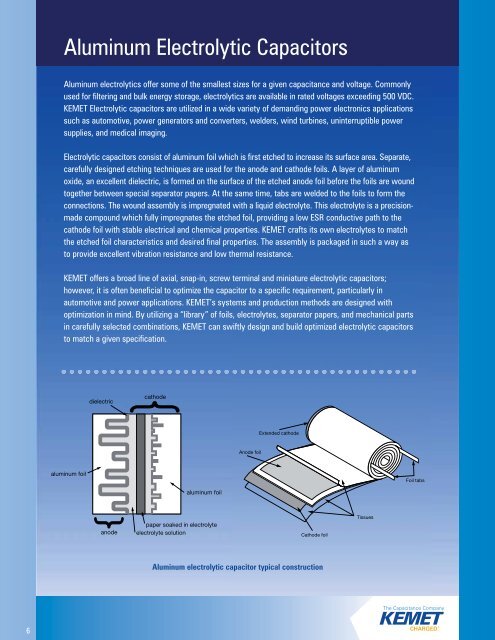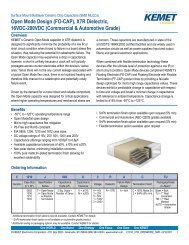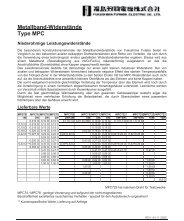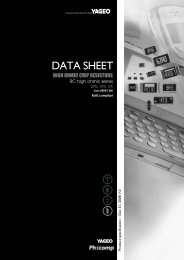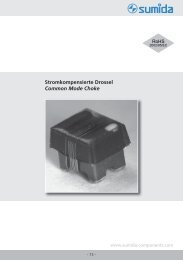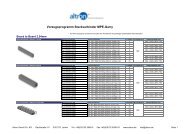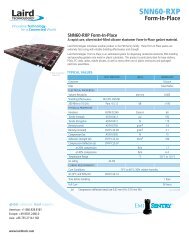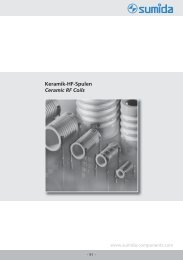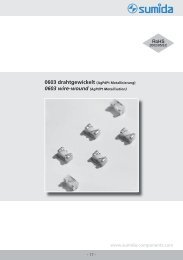Ceramic Capacitors
Ceramic Capacitors
Ceramic Capacitors
Create successful ePaper yourself
Turn your PDF publications into a flip-book with our unique Google optimized e-Paper software.
6<br />
Aluminum Electrolytic <strong>Capacitors</strong><br />
Aluminum electrolytics offer some of the smallest sizes for a given capacitance and voltage. Commonly<br />
used for filtering and bulk energy storage, electrolytics are available in rated voltages exceeding 500 VDC.<br />
KEMET Electrolytic capacitors are utilized in a wide variety of demanding power electronics applications<br />
such as automotive, power generators and converters, welders, wind turbines, uninterruptible power<br />
supplies, and medical imaging.<br />
Electrolytic capacitors consist of aluminum foil which is first etched to increase its surface area. Separate,<br />
carefully designed etching techniques are used for the anode and cathode foils. A layer of aluminum<br />
oxide, an excellent dielectric, is formed on the surface of the etched anode foil before the foils are wound<br />
together between special separator papers. At the same time, tabs are welded to the foils to form the<br />
connections. The wound assembly is impregnated with a liquid electrolyte. This electrolyte is a precisionmade<br />
compound which fully impregnates the etched foil, providing a low ESR conductive path to the<br />
cathode foil with stable electrical and chemical properties. KEMET crafts its own electrolytes to match<br />
the etched foil characteristics and desired final properties. The assembly is packaged in such a way as<br />
to provide excellent vibration resistance and low thermal resistance.<br />
KEMET offers a broad line of axial, snap-in, screw terminal and miniature electrolytic capacitors;<br />
however, it is often beneficial to optimize the capacitor to a specific requirement, particularly in<br />
automotive and power applications. KEMET’s systems and production methods are designed with<br />
optimization in mind. By utilizing a “library” of foils, electrolytes, separator papers, and mechanical parts<br />
in carefully selected combinations, KEMET can swiftly design and build optimized electrolytic capacitors<br />
to match a given specification.<br />
aluminum foil<br />
dielectric<br />
anode<br />
cathode<br />
aluminum foil<br />
paper soaked in electrolyte<br />
electrolyte solution<br />
Anode foil<br />
Extended cathode<br />
Cathode foil<br />
Aluminum electrolytic capacitor typical construction<br />
Tissues<br />
Foil tabs


